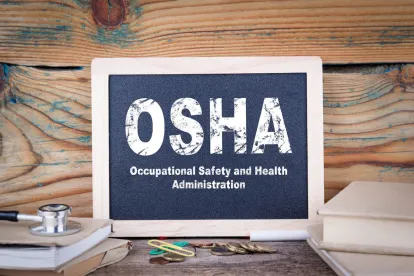On September 15, 2022, the United States Department of Labor (“DOL”) announced an update to the Occupational Health and Safety Administration’s (“OSHA”) Severe Violator Enforcement Program (“SVEP”).
First introduced in June 2010, the SVEP focuses on employers that, in OSHA’s view, “continue to expose workers to very serious dangers, even after being cited for them.” The SVEP’s goal is to “concentrate[] resources on inspecting employers who have demonstrated indifference to their OSH Act obligations by willful, repeated, or failure-to-abate violations.” Under prior guidelines, an employer would be designated a “severe violator” if it was involved in an OSHA enforcement action that:
-
involved a fatality in which OSHA found one or more willful, repeat, or failure-to-abate violations;
-
involved a catastrophe (three or more hospitalizations) in which OSHA found one or more willful, repeat, or failure-to-abate violations;
-
involved a high-emphasis hazard in which OSHA found two or more high-gravity willful, repeat, or failure-to-abate violations;
-
involved the potential release of a highly hazardous chemical in which OSHA found three or more high-gravity willful, repeat, or failure-to-abate violations; or
-
was classified by OSHA as “egregious.”
In an effort to (1) broaden the violations, hazards, and standards applicable to the SVEP, and (2) potentially encompass additional industries and employers, these new guidelines greatly expand the SVEP’s scope by including all hazards and OSHA standards (i.e., the new criteria is no longer limited to the situations mentioned above). Further, employers will be placed in the SVEP if at least two willful or repeated violations are found, or if OSHA issues failure-to-abate notices based on the presence of high gravity serious violations.[1] Further, the new guidelines require follow-up or referral inspections to be conducted within one year, but no longer than two years, after the final order. OSHA anticipates, as should employers, that these changes will result in many more employers being entered into the SVEP.
In addition to the revised criterion, OSHA also amended the SVEP’s follow-up inspections and removal processes. OSHA insists that these changes were implemented to incentivize employers to quickly and effectively remedy problems, and develop lasting solutions. These changes include:
-
The SVEP removal timeline will now begin when the employer remedies the alleged hazard rather than at the end of the administrative process. Thus, the potential for SVEP removal now begins three (3) years after the date of verification that all SVEP-related hazards have been remedied, opposed to the issuance of a final order. In effect, this should speed up the removal timeline, allowing employers to be removed from the list quicker than before.
-
The amount of time in SVEP cases can be reduced to two (2) years if employers consent to an enhanced settlement agreement that implements a health and safety management system that includes the seven (7) basic elements outlined in OSHA’s Recommended Practices for Safety and Health Programs. These basic elements must be included in any enhanced settlement agreement to receive the time reduction.
The DOL states that “[i]t is the goal of this administration to maximize all tools available to us to ensure employers comply with their legal obligation to provide safe and healthful workplaces. These changes to SVEP will hold a microscope to those employers who continue to expose workers to very serious dangers and help ensure America’s workers come home safe at the end of every shift.” Thus, it should be clear to employers that these SVEP changes clearly demonstrate that OSHA is prioritizing enforcement with the intent of increasing penalties on employers that repeatedly and/or willfully violate the OSH Act.
FOOTNOTES
[1] In determining the gravity of a violation, OSHA considers (1) the severity of the injury or illness that could result from a violation, and (2) the probability that an injury or illness could occur because of the violation. With several different violation levels being possible, the gravity of a violation is determined by the Gravity Based Penalty (“GBP”) amount. As of January 13, 2022, a violation with a GBP of $14,502 per violation is classified as a “high gravity” violation.





 />i
/>i

